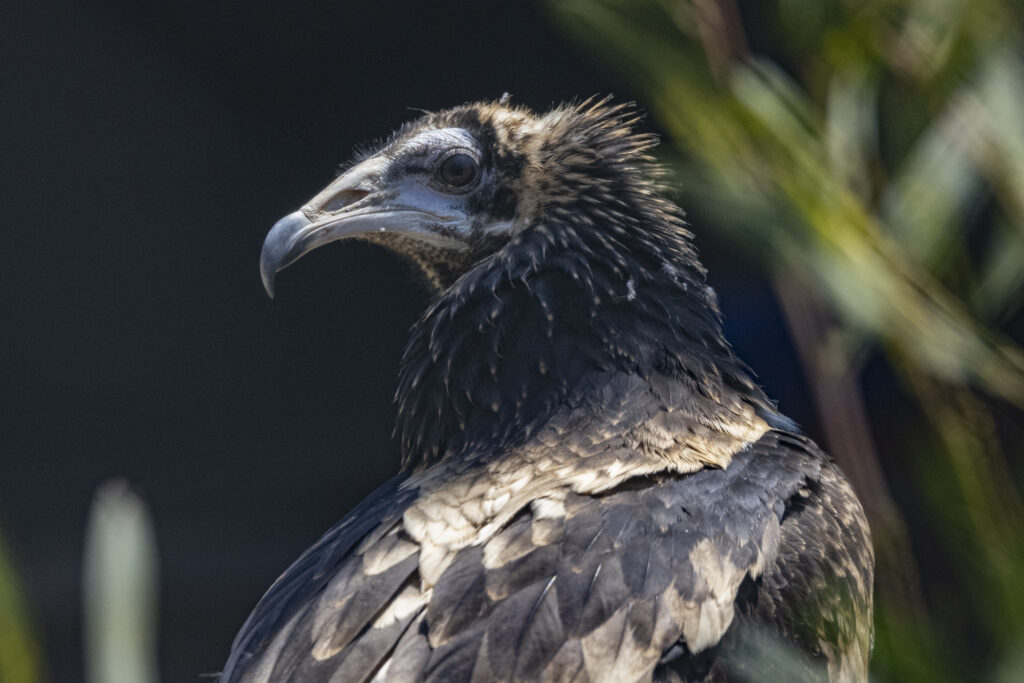
New National Effort to Save Endangered Species Begins at the San Diego Zoo Safari Park
SAN DIEGO (Sept. 23, 2021) – After more than four decades of successfully breeding, rearing and introducing California condors and other vultures back into their native habitats, San Diego Zoo Wildlife Alliance is ushering in a new era of vulture conservation. Wildlife care specialists at the San Diego Zoo Safari Park have begun hatching and raising the Western Egyptian vulture, a species native to southern Europe, Asia and northern Africa. Listed as Endangered on the International Union for Conservation of Nature (IUCN) Red List of Threatened Species, very few of these rare birds live in the United States—and this novel breeding program represents new hope for increasing the conservation population of the species in North America.
“This is an endangered species with a rapidly declining population trend, as is the plight of many vulture species,” said Lisa Peterson, executive director of the San Diego Zoo Safari Park. “Increasing the number of individual birds and maintaining genetic diversity in North America is an extremely important part of our work. As Egyptian vulture numbers continue to decline in their native habitat, the genetic line of every individual becomes increasingly more important to the continuation of this species.”
A chick named Jamila was successfully hatched earlier this year, and she is the offspring of the only Western Egyptian vulture breeding pair in North America. She is also the first hatchling of the species in San Diego Zoo Wildlife Alliance’s 105-year-history. To ensure Jamila’s survival after hatching, wildlife care specialists used 40 years of experience conserving threatened vultures by puppet rearing her—a practice where they passed food to Jamila from the beak of a lifelike hand puppet resembling an adult vulture. This care process is particularly valuable to the successful rearing of a chick from a species with such low population numbers, and with inexperienced parents. It also ensures that the chick not only receives proper care, but also does not form a bond with humans.

“Puppet versus hand rearing is an important distinction to make, as these are very intelligent animals that can easily imprint on humans, if we are not careful,” said Peterson. “Due to the low numbers of Egyptian vultures, each one is very special. The likelihood of survival for each offspring is greatly increased by assisting with rearing in the early years of a program. The California condor program is a great example of how this method is used.”
Worldwide, vultures are considered one of the most threatened groups of birds, yet they are essential to a healthy ecosystem—preventing the spread of disease to other wildlife and to humans. The well-known California condor program is a noteworthy conservation success story as it not only allowed scientists to study the species, but also helped them develop and enhance the systems necessary to preserve a vital vulture species that was near extinction. California condors are just one of 19 of the world’s 23 vulture species that San Diego Zoo Wildlife Alliance has cared for, and the Egyptian vulture is the 11th species that has successfully bred at the San Diego Zoo and San Diego Zoo Safari Park. Moving forward, San Diego Zoo Wildlife Alliance plans to use its vulture expertise to continue increasing this species populations, and work with additional partners—including zoos and other conservation institutions—to help supplement the program when needed.
About San Diego Zoo Wildlife Alliance
San Diego Zoo Wildlife Alliance is a nonprofit international conservation leader, committed to inspiring a passion for nature and creating a world where all life thrives. The Alliance empowers people from around the globe to support their mission to conserve wildlife through innovation and partnerships. San Diego Zoo Wildlife Alliance supports cutting-edge conservation and brings the stories of their work back to the San Diego Zoo and San Diego Zoo Safari Park—giving millions of guests, in person and virtually, the opportunity to experience conservation in action. The work of San Diego Zoo Wildlife Alliance extends from San Diego to strategic and regional conservation “hubs” across the globe, where their strengths—via their “Conservation Toolbox,” including the renowned Wildlife Biodiversity Bank—are able to effectively align with hundreds of regional partners to improve outcomes for wildlife in more coordinated efforts. By leveraging these tools in wildlife care and conservation science, and through collaboration with hundreds of partners, San Diego Zoo Wildlife Alliance has reintroduced more than 44 endangered species to native habitats. Each year, San Diego Zoo Wildlife Alliance’s work reaches over 1 billion people in 150 countries via news media, social media, their websites, educational resources and the San Diego Zoo Kids channel, which is in children’s hospitals in 13 countries. Success is made possible by the support of members, donors and guests to the San Diego Zoo and San Diego Zoo Safari Park, who are Wildlife Allies committed to ensuring All Life Thrives.




